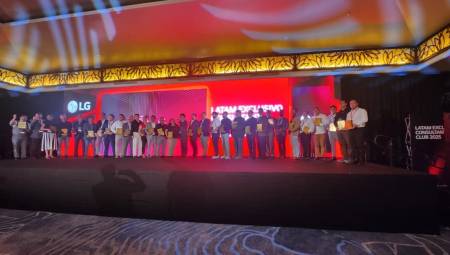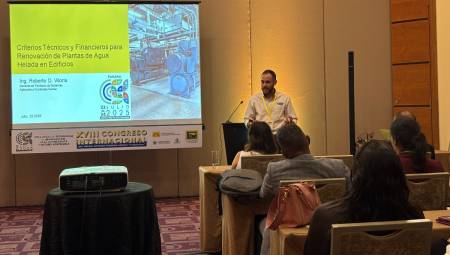 International. If our walls could speak, they would ask us what the hell is going on. Healthcare buildings have overflowed, hotels are becoming hospitals, fashion houses transformed into high-volume PPE factories, automatic manufacturing in ventilator production, and everyone is at home while an unprecedented amount of our commercial real estate is empty.
International. If our walls could speak, they would ask us what the hell is going on. Healthcare buildings have overflowed, hotels are becoming hospitals, fashion houses transformed into high-volume PPE factories, automatic manufacturing in ventilator production, and everyone is at home while an unprecedented amount of our commercial real estate is empty.
We weren't prepared for this pandemic, but we're showing incredible innovation to adapt to these challenges. As we move from emergency to new reality and recovery, our buildings are becoming an increasingly large part of the solution.
This is biological warfare with our health workers on the front lines. Like hospital staff, the crisis is also pushing hospital building systems beyond their limits. Like those doctors and nurses, it is essential to ensure that building systems are functioning optimally and that the risk of failure is reduced as much as possible. A faulty HVAC system could make large areas of a hospital feel uncomfortable or even uninhabitable, which can directly increase the death toll in a crisis where hospital space is scarce.
Those buildings with remote monitoring of HVAC systems are in an excellent position for remote workers to foresee potential problems and adopt solutions before problems occur. Otherwise, a socially distanced visit from an HVAC technician can be worth the risk of avoiding bigger problems at crucial times. This new disaster can also serve as a warning sign that encourages us to ensure that someone is taking care of the building while hospitals overflow.
"Like all hazards, the risk can be reduced but not eliminated, so be sure to communicate the limitations of the HVAC system and our current state of knowledge about the virus and its spread," said Lawrence J. Schoen, PE, Fellow/Life fellow in ASHRAE standards authority. "We all have a role to play in controlling the spread of this disease. HVAC is part of this and even more important are social distancing, hygiene, and the influence we can have on personal behavior."
Schoen recently produced guidance for building operations during the COVID-19 pandemic. The paper establishes the complexity of the current situation, underlining the limits of HVAC systems for the style of contagion through droplets rather than air, and reinforcing the need to prioritize cleanliness in the building environment. It also provides specific guidance for HVAC actions that can be taken, including methods to increase outdoor air ventilation, improve core air filtration, as well as other considerations. "The consequences of overwhelming the capacity of our health systems are enormous and potentially tragic. The sooner we 'flatten the curve', the sooner we can return to a safer and more normal economic and personal life," he added.
In addition to increasing the risk of system failure, increased use also increases the hospital's energy inefficiency, which has been largely ignored in the crisis. In smarter hospitals, where energy consumption patterns are monitored, analyzed, and predicted to optimize energy efficiency, this is the time to recalibrate our new reality whenever possible. Energy efficiency may not be the top priority for hospital managers, but this is an opportunity for the HVAC sector to learn, innovate and support whenever possible.
An early CDC release of a July 2020 research paper from the Guangzhou Center for Disease Control and Prevention even suggests that air conditioning at a restaurant in Guangzhou, China, dictated the spread of the virus among customers. With the participation of three family groups, the researchers found that the direction of airflow was consistent with droplet transmission and recommended increasing the distance between tables and improving ventilation. As we continue to understand the outbreak, we will find new and more effective ways to help.
"Due to the highly contagious nature of COVID-19, many building engineering employees in non-medical facilities are asked to do what they can with their existing systems to help slow the spread of COVID-19 through improved cleaning practices and review their operating HVAC sequences," said Justin Lee, InSite's chief engineer, in his own message to the building systems community, which references the ASHRAE COVID HVAC guide.
"Providing building engineers with new tools available through the digital enablement of their facilities and systems will enable building operators to respond quickly to these changing circumstances. Although many of these suggested sequences are atypical in non-medical facilities, digitally enabled assets can quickly adjust their operations and provide verification that the extra effort to protect their assets is effective," Lee continued.
We still don't know how long it will be until the closure ends and we can return to our offices. It's also unclear how companies will address the problem of bringing back employees safely. We are not waiting for the virus to run its course, so we can end the lockdown and get back to normal; we have applied the lockdown to curb the impact of the virus while determining what to do next. For the sake of the economy, people will begin to return to work while the virus is still active, cases will rise again as governments find a balance between health and the economy. The role of our building systems is occupant safety, as it has always been different.
"Building operators must maintain a focus on balancing operating costs while maintaining a safe and healthy environment for extended periods of varying occupancy levels. Some buildings are completely empty and have been closed, while many are operating at a fraction of their normal occupancy levels while supporting essential workers and businesses," Lee explains. "This requires constant communication between building operating staff and tenants, as well as adjustments to building operations while constantly measuring the impact of the revised operational strategies."
Lee also recommends that building managers significantly reduce the number of building's operational staff, by up to 75% in some cases, in addition to applying social distancing strategies and anticipating sudden staff quarantine. And, as we discussed for hospitals, digitally enabled buildings, especially those with remote monitoring and control functionality, offer the greatest flexibility for the current crisis and the unknown future.
We may have taken ourselves by surprise and set aside the efficient operation of our buildings by moving into emergency response mode. However, this is a different kind of disaster, requiring us to adapt to a new reality, for a while, rather than recovering from adversity through sheer will and communication. We have to be "smart" about it.
"The power to provide building operators with the tools that come with digitally enabled facilities to quickly adapt to the changing circumstances presented by the COVID-19 pandemic cannot be overstated," Lee concludes. "Digitally enabled facilities give building operators the tools to measure new security protocols in real time and keep their facilities running with fewer on-site staff; this provides a key piece to ensure a robust and resilient response to the current crisis."
Source: memoori.














